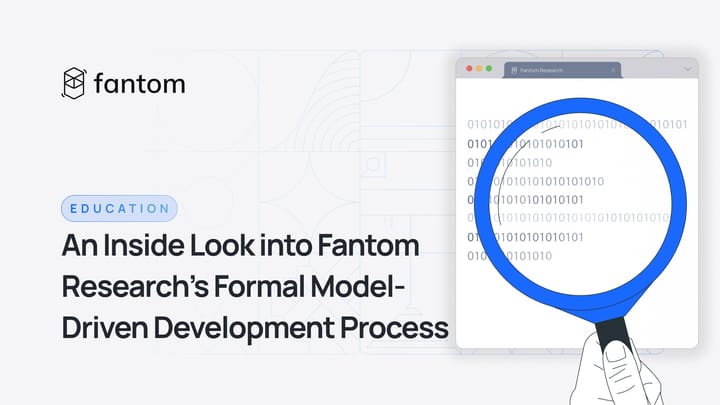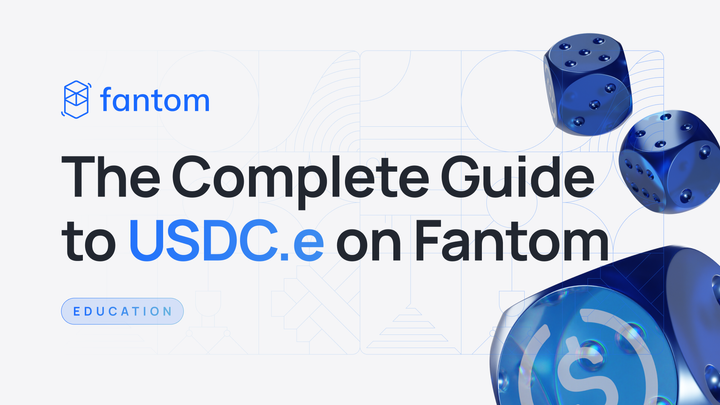How Fantom will level-up Blockchain Gaming

If current signals are anything to go by, blockchain-based gaming promises to evolve as a compelling crypto-use case that will disrupt the massive, global gaming industry.
In the set of games that it tracks, DappRader reports that over 883,000 daily unique wallets interacted with game-related smart contracts in August versus 804,000 the month prior. These numbers represent well over 100% growth since January and indicate a broader trend gaining momentum as more and more game developers announce blockchain projects.
Overall, the opportunities for blockchain gaming remain vast: the global gaming market, valued at USD 173.70 billion in 2020, is predicted to reach a staggering USD 314.40 billion by 2026. In terms of online gaming specifically, current estimates place the number of gamers at 1 Billion and growing – in other words, almost one in seven people globally.
In this article, we examine how blockchain technologies enhance games and address some of the legacy problems of the gaming industry. There are clear synergies between blockchain and gaming, but real progress has been slowed by technological hurdles and the need for more robust decentralized networks.
Fantom resolves these limitations, making it the ideal platform for game developers seeking to leverage blockchain technologies for newer, player-driven games.
Play-to-earn
Most blockchain games follow the play-to-earn model, which involves rewarding gamers for playing games and joining in-game economies, where players buy and sell game-related items.
Unlike older models of games – such as free-to-play with in-game purchases, or pay-to-play – gamers on blockchain-based games are given complete control over the digital assets they own.
The system creates a virtuous circle in which, by playing games and participating in game economies, players earn rewards like weapons, skins, game items, etc., most commonly taking the form of NFTs.
Through either use over time or scarcity, these items can accrue worth; users can sell them for cryptocurrencies with monetary value. Offering earning opportunities in this way incentivizes continued play and boosts retention.
Pay-to-earn
Closely related to play-to-earn is the pay-to-earnmodel, in which users must make an initial, up-front purchase of an in-game asset, which, as above, is commonly an NFT.
As in the play-to-earn model, the item can gain value over time, with the promise of earnings serving as an incentive for stickiness.
GameFi on Fantom
Both the play- and pay-to-earn models are frequently classified as types of GameFi, a term underscoring the earning potential of gameplay.
A successful blockchain game requires a robust blockchain foundation with fast transaction speeds and negligible fees. Without these, games are unplayable: users will not (and should not) pay hefty transaction fees when buying or selling an item.
When Ethereum gas prices spiked in May 2021, daily activity, measured in unique wallet interactions with game-related smart contracts, dropped by 87%. Waiting for transactions can interrupt games and similarly ruin the immersive experience.
As an EVM-compatible secure and decentralized platform offering 1-second transaction finality and near-zero fees, Fantom offers reliably consistent and smooth performance even during periods of extremely high traffic.
Blockchain and the Legacy Gaming Industry
Blockchain-based games address many of the thorny issues that have plagued game developers.
Ownership of in-game assets
Gamers are wary of paying for in-game assets that are managed by the developer and non-transferable. Worse yet, when a gaming platform shuts down, gamers lose their investment entirely.
By tokenizing in-game assets, which essentially means creating NFTs, developers can give gamers full ownership of assets (see our article on NFTs for more on this token class).
Once converted into a token, gaming items become interoperable: users can carry them between games configured for cross-game NFTs and trade them on secondary markets. These actions bring substantial value to intangible assets and, indirectly, to the game developers who created them.
Fantom’s high-throughput and near-zero transaction fees translate into easy trading for gamers. Moreover, the impending launch of Artion, Fantom’s feature-rich NFT marketplace, offers a ready-made platform for gaming items.
Simple profile management
For the avid gamer, maintaining multiple profiles across different games can be burdensome and annoying.
Just as blockchain assigns users with a Public Key usable across dApps on a platform, decentralized tech can be used to create portable profiles.
Fantom’s digital identity solutions for corporate clients can be easily adapted for gaming needs to securely store gamer profiles and even their assets on the decentralized ledger, with no need to rely on a vulnerable central server.
Security of gaming platforms
Trust is a critical factor that can make or break a gaming community. It goes without saying that lost transactions and hacks can seriously undermine a gaming platform that offers players options to buy or earn in-game items.
The Fantom decentralized blockchain ledger secures both player profiles and transaction records, thereby mitigating loss. The Fantom network offers deterministic finality: once a transaction processes – usually within 1 second – it is final and irreversible. Many other blockchain platforms rely instead on probabilistic finality, where transactions are considered final only after a certain time.
The examples discussed thus far focus primarily on transactions and in-game items. Blockchain technology can also fundamentally change the architecture of games, improving user experience and empowering gamers to participate in expanding game developer offerings and growing communities.
Developing dApp Games
By virtue of being decentralized and open-source, games built as dApps running on smart-contract platforms can outlive the production cycle that game developers forecast.
The idea is straightforward: since dApp games run independently of a centralized server, they can remain online and accessible as long as there is a network to support them. This means that a dedicated, hard-core community could keep a game running long after developers move on to other projects.
Open participation
Related to this, the open-source nature of dApp games means that anyone can develop them; dApp games open an incredible pathway for developers toleverage the creative potential of their communities to expand in-game worlds.
Consider the following scenario: as a blockchain game crosses the mid-point of its life cycle, developers can revert control to the community, inviting members to add modules or create expansions.
The broad community may vote for their favorite, which would then attain official status. Expanding this way encourages participation, extends the life of in-game economies, and crucially brings value to both the game and the developer.
Rarity
Already, Fantom users have been experimenting with decentralized game development. On September 5, 2021, Fantom core team member Andre Cronje released the framework for a blockchain-based role-playing/adventure game called Rarity that he opened to the community for development.
Fantom users have created over 2.5 million characters (as of September 21, 2021), and developers have flocked to the game, creating a universe in which play and development are simultaneous.
There is now a marketplace for users to buy and sell characters, and several “visualizers” that convert the mechanics of smart contracts into visual, interactive experiences (Rarity-MMO, Rarity Visualizer, Rarity Extended, Rarity Manifested).
Rarity’s early successes have spawned the development of other games, such as Lair of Wisdom.
Fantom and the Future of Blockchain Gaming
Going forward, we expect to see overlaps between NFT and blockchain markets to grow significantly as developers increasingly recognize the market opportunity of blockchain-based games revolving around digital assets and digital assets with realizable value.
We further anticipate developers moving to integrate games into the persistent, real-time worlds of the metaverse.
The creative collision of all of these areas – NFTs, games, blockchain technologies, the metaverse – is inevitable. Though the outcomes might be unpredictable, they will most certainly transform the gaming industry.
Fantom is built to evolve in these contexts. From the imminent launch of the NFT marketplace Artion to ongoing innovation at the protocol level, Fantom is uniquely positioned as a Layer-1 protocol with the capacity to support present and future complex gaming requirements.
To learn more, contact us at gaming@fantom.foundation.



